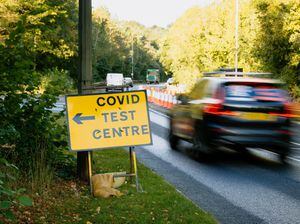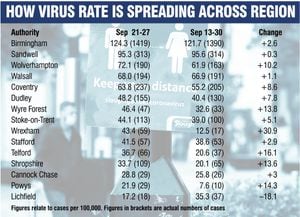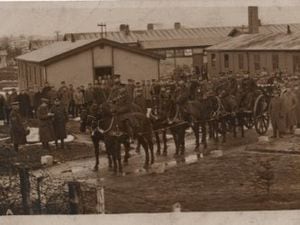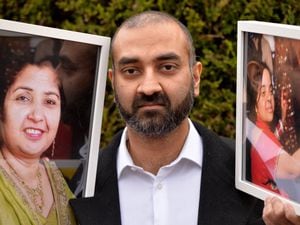Hope to be found among Covid figures but attention shifts to rise in rural areas
Rural areas of the West Midlands appear to be catching up with levels of virus transmission, according to the latest figures.

While the rate is stabilising in many urban areas, parts of Worcestershire, Staffordshire and Shropshire have shown some of the biggest rises.
Wyre Forest, Telford & Wrekin and Shropshire are among those that have seen double-digit increases in the rate of people infected per 100,000.
It suggests those areas are behind the rest of the region in the curve of the virus, with transmission now moving from towns and cities into more isolated areas.
While almost all areas have shown a rise, the figures show that the speed of increase appears to be slowing. That raises hopes that extra lockdown measures imposed on much of the region are starting to take effect.

The one area where the rate has dropped is Lichfield. That is believed to be down to an anomaly caused by a localised cluster of cases.
Birmingham remains the worst affected part of the West Midlands, with more than 124 cases per 100,000. It is followed by Sandwell and Wolverhampton, both areas where extra steps have been put in place.
Our region is still not seeing the level of infection being experienced by the North West and North East of England. Burnley continues to have the highest rate in England, with 291 new cases recorded in the seven days to September 27 – the equivalent of 327.3 cases per 100,000 people.
More Covid-19 coverage:
In Liverpool the rate has increased from 198.4 to 258.4 with 1,287 new cases and in Newcastle upon Tyne it us up from 160.8 to 255.6, with 774 new cases.
The figures, released by Public Health England, show “early signs” that lockdown measures may be working, according to Health Secretary Matt Hancock.
Mr Hancock highlighted the findings of the React study, which he said offered some indication that measures already taken in hotspots were working.
“Today’s React study from Imperial College suggests that whilst the R number (the average number of people infected by someone with coronavirus) remains above one, there are early signs that it may be falling,” he said.
“We must not let up, but people everywhere can take some small hope that our efforts together may be beginning to work – I put it no stronger than that, cases are still rising.”
Mr Hancock also defended the 10pm curfew in pubs and restaurants but promised to do “whatever we can” to support the hospitality industry.
“I know that these measures are hard and they are yet another sacrifice after a year of so many sacrifices already, but there are some signs that what we are doing together to respond to these awful circumstances is starting to work,” Mr Hancock said.





